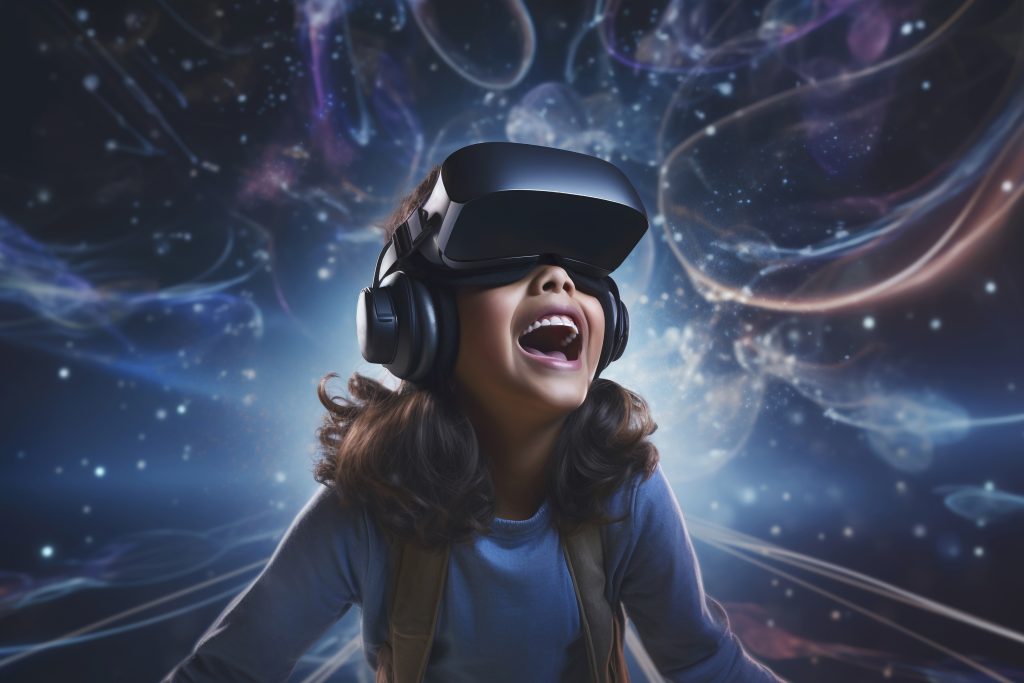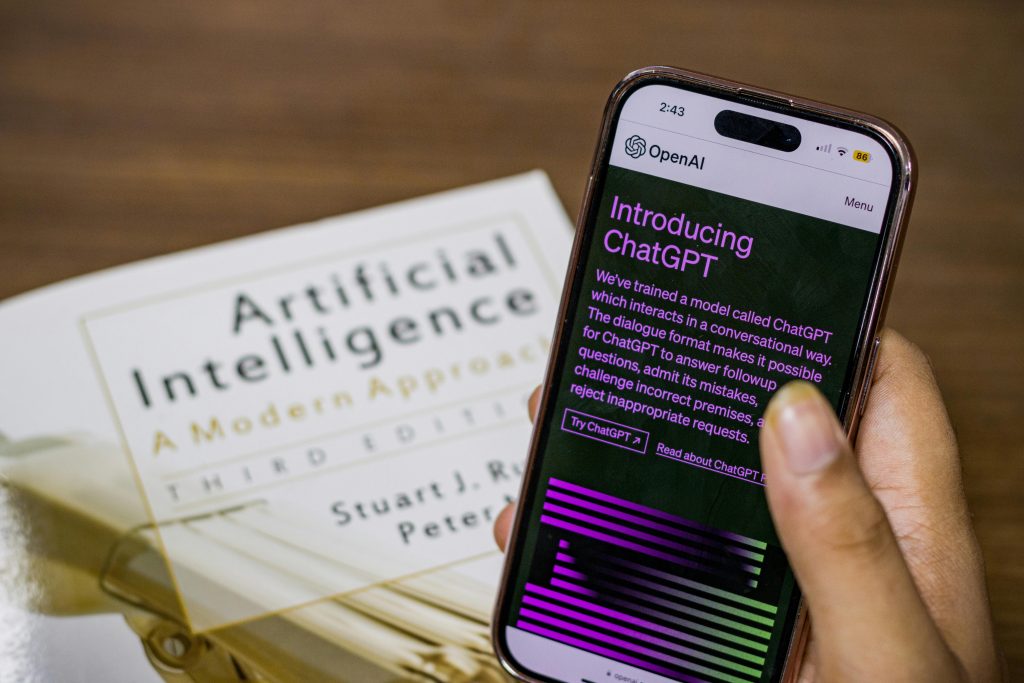How Children Will Shape the Future of AI

Artificial intelligence (AI) is advancing at an extraordinary pace, impacting nearly every industry and aspect of daily life. Breakthroughs in technologies like machine learning, natural language processing (NLP), and robotics have transformed AI into a smarter, more efficient force capable of handling tasks once thought to be exclusively human. Today’s AI systems excel in areas such as image generation, autonomous navigation, and advanced problem-solving. In healthcare, AI not only assists in diagnosing diseases but also personalizes treatment plans. Meanwhile, in finance, AI optimizes everything from automated trading to fraud detection. These advances aren’t isolated—they’re part of a wider transformation where AI’s influence stretches across diverse fields like autonomous vehicles, creative industries, and personalized content generation. Recent innovations, such as OpenAI’s ChatGPT and DALL·E, have redefined natural language processing and image generation, creating more lifelike interactions and more creative outputs than ever before. Robotics has also seen impressive developments, with robots like Tesla’s Optimus showing promise in manufacturing, logistics, and beyond. AI is now a cornerstone of smart homes, managing everything from energy consumption to security systems. Platforms like Google Bard and AI-powered tools in platforms like Adobe Firefly are reshaping how we interact with technology, bringing AI deeper into content creation, task management, and decision-making processes. Children growing up in this AI-saturated world are uniquely positioned to shape its future. Their early exposure to AI, from interactive educational platforms to creative AI tools, equips them with the skills and perspectives necessary to influence how AI develops. As natural-born users and future creators, these children will play a crucial role in determining AI’s ethical trajectory, innovative applications, and societal impact. Here’s How Children Are Poised to Play a Significant Role in Shaping the Future of AI. 1. Early Exposure and Familiarity 2. Education and Skill Development 3. Ethical Considerations and Values 4. Innovation and Creativity 5. The Workforce of Tomorrow Conclusion Children are uniquely positioned to shape the future of AI. Their early exposure to AI, combined with their creativity and innate sense of fairness, will play a pivotal role in how AI develops across industries and societal applications. By fostering AI education, creativity, and ethical awareness in children, we can empower the next generation of innovators and leaders who will harness AI responsibly. The future of AI will not just be about technological advancement but about ensuring that AI serves humanity in a collaborative and meaningful way. By nurturing children’s relationship with AI, we can create a more equitable, creative, and sustainable world where AI enhances human potential.
Strategies to Make Kids Ready to Face Future Job Market Challenges

In today’s fast-changing world, preparing our kids ready for future careers goes beyond traditional education. As parents and educators, we must equip the next generation with skills that transcend textbooks. With automation and artificial intelligence reshaping industries, experts predict that 65% of today’s children will work in jobs that don’t yet exist, highlighting the urgency for adaptable and forward-thinking educational approaches. How to Equip Your Child With Essential Skills for Future Success How to Mold Your Child for the Jobs of the Future Essential Steps Every Parent Should Take Preparing your child for future careers is a significant responsibility, but as a parent, you have the power to profoundly influence their readiness. Here’s an in-depth guide on how to achieve this. Let’s Decode the Future Job Market to Better Prepare Our Kids for Their Careers Conclusion: Equipping your child for future career demands necessitates a comprehensive approach that combines education, practical experience, and a progressive mindset. Enroll them in courses focused on emerging technologies such as robotics, coding, and AI to foster creativity and enhance problem-solving abilities. Moreover, participation in competitions and engagement in interdisciplinary learning are essential to develop adaptability and innovative thinking. This multifaceted strategy prepares your child to successfully navigate and meet the challenges of the future.
What Happens If We Don’t Teach the Application of Generative AI to Our Children?

In the rapidly evolving landscape of technology, Artificial Intelligence (AI) has emerged as one of the most transformative forces of our time. From enhancing daily conveniences to revolutionizing entire industries, AI’s impact is profound and far-reaching. Among the myriad of AI technologies, Generative AI stands out for its ability to create – it can generate text, images, music, and even entire virtual environments. This capability not only augments human creativity but also opens up new realms of possibilities in education, entertainment, healthcare, and beyond. As the world becomes increasingly driven by AI, it is crucial to consider how we are preparing the next generation to navigate and thrive in this new reality. The ability to understand and apply Generative AI is rapidly becoming a fundamental skill, much like reading, writing, and arithmetic. However, there is a significant risk that without proactive education and exposure, many children will grow up without the essential knowledge and skills needed to harness the power of this technology effectively. Imagine a future where AI tools are as commonplace as smartphones and computers, where children use AI to aid their learning, fuel their creativity, and solve complex problems. Now, contrast this with a scenario where children are merely passive consumers of AI technology, lacking the understanding and skills to engage with it meaningfully. The gap between these two futures is vast and has profound implications for individual opportunities, societal progress, and ethical standards. In this blog, we will explore the critical reasons why teaching children about the applications of Generative AI is not just beneficial but necessary. 1. Lagging Behind in a Competitive World Generative AI is already influencing job markets globally, with applications in fields as diverse as healthcare, finance, marketing, and entertainment. If children are not exposed to Generative AI, they risk falling behind their peers who are better prepared to navigate and leverage these technologies. This knowledge gap could result in limited career opportunities and reduced competitiveness in an increasingly AI-driven economy. For instance, AI proficiency is becoming a desired skill in many job descriptions, and without this knowledge, future job seekers might find themselves at a disadvantage. 2. Missed Opportunities for Creativity and Innovation Generative AI is not just about technology; it’s also a catalyst for creativity and innovation. AI can assist children in creating music, art, stories, and even game designs, pushing the boundaries of their imagination. Without understanding how to use these tools, they miss out on opportunities to explore new creative processes and contribute to the arts and sciences in novel ways. For example, a child interested in art could use AI to experiment with different styles and techniques, learning more about artistic expression in the process. 3. Lack of Critical Thinking Skills Teaching children about Generative AI goes beyond technical skills; it also involves fostering critical thinking and ethical considerations. Understanding how AI works, its potential biases, and its impact on society helps children develop a critical approach to technology. Without this knowledge, they might become passive consumers of AI-generated content, lacking the ability to question and critically analyze the technology they use. For example, understanding AI bias can help them recognize and challenge unfair algorithms, promoting a more equitable society. 4. Reduced Digital Literacy In a world where digital literacy is becoming as important as traditional literacy, Generative AI plays a crucial role. Knowing how to interact with AI, from chatbots to AI-driven search engines, is essential for effective communication and information retrieval. Children who are not taught about Generative AI might struggle with digital literacy, making it harder for them to access and evaluate information in the digital age. For example, they might not be able to differentiate between AI-generated content and human-created content, leading to misinformation. 5. Unprepared for Ethical and Privacy Challenges Generative AI raises significant ethical and privacy issues. For instance, AI-generated deepfakes can be used maliciously, and AI algorithms can perpetuate biases if not properly managed. By educating children about these challenges, we prepare them to navigate and address ethical dilemmas and privacy concerns. Without this education, children may become vulnerable to misinformation and unethical AI practices. For instance, understanding the implications of data privacy can help them protect their personal information online. 6. Limited Problem-Solving Abilities Generative AI can be a powerful tool for problem-solving. For example, AI can help design efficient algorithms, create new products, and even assist in scientific research. By understanding how to harness AI, children can develop advanced problem-solving skills, essential for tackling complex real-world challenges. Without this knowledge, their ability to innovate and solve problems effectively is diminished. For instance, a child interested in engineering could use AI to simulate and test various designs, enhancing their understanding and capabilities. 7. Disconnect from Technological Advances As AI continues to advance, those without knowledge of Generative AI risk being disconnected from significant technological progress. This disconnect can lead to a lack of engagement and participation in societal and technological discussions, further widening the gap between those who understand AI and those who do not. For example, they might be less likely to participate in discussions about AI ethics or the impact of AI on jobs, limiting their ability to influence future developments. Final Thoughts The application of Generative AI holds immense potential for the future, and it is crucial that we prepare our children to understand and use this technology responsibly and creatively. By integrating AI education into their learning journey, we equip them with the skills to thrive in a tech-driven world, foster their creativity, and develop their critical thinking abilities. Conversely, failing to do so could leave them at a significant disadvantage, both personally and professionally. Let us commit to making Generative AI an integral part of our children’s education, ensuring they are well-prepared to lead and innovate in the future. Fostering AI literacy and responsible use of technology requires collaborative efforts from parents, educators, policymakers, and society at large. By providing resources and support for parents to engage with their children on AI topics,
Best Strategies for the Responsible Use of Generative AI in Education

Employing Generative AI in education can enhance learning outcomes, strengthen teacher performance and wellness, and foster equity in educational practices. Conversely, lacking such oversight, there exists the potential for privacy violations, inconsistent disciplinary procedures, and inefficient application of AI technologies in educational settings. What is Generative AI? Generative AI refers to a subset of artificial intelligence technologies that can generate new content, ranging from text and images to music and code, based on the patterns and information it has learned from training data. This technology utilizes advanced machine learning models and algorithms, particularly those based on neural networks such as Generative Adversarial Networks (GANs) and transformer models like OpenAI’s GPT (Generative Pre-trained Transformer) series. How Generative AI Enhances Learning Challenges and Ethical Considerations of Using Generative AI in Education 7 Strategies for Responsibly Using Generative AI in Education Here are seven Strategic guidelines that educators, policymakers, and educational leaders should consider when establishing protocols to ensure the responsible and effective implementation of AI in education. These seven Strategies offer a structure for the responsible and effective use of AI in education. By following these guidelines, educators and policymakers can take advantage of AI’s benefits while tackling its challenges, ensuring an approach that is balanced, ethical, and inclusive. Conclusion As we navigate the evolving landscape of education technology, it’s clear that AI holds transformative potential for enhancing learning environments, personalizing educational experiences, and streamlining administrative tasks. However, the integration of AI into education comes with its own set of challenges and ethical considerations, particularly regarding data privacy, equity, and the preservation of human oversight. By adhering to the strategic guidelines outlined in this blog, educators and policymakers can ensure that AI is used responsibly and effectively. As AI technologies continue to develop, it will be crucial to remain vigilant and adaptable, continuously assessing their impact and refining their use to serve the best interests of all students. Embracing AI in education is not just about leveraging new tools, but about fostering an inclusive, equitable, and enriched learning landscape for future generations.
